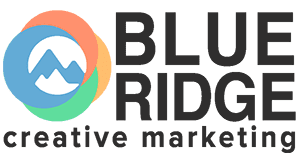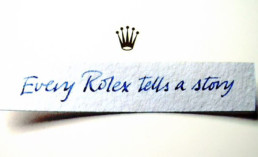Why Creative Matters in Mobile Advertising
In order for mobile app platforms to survive, it’s critical to continue achieving profitable user acquisition. However, mobile advertising is a constantly changing landscape.
What works for you today might not work for you tomorrow. 95% of your direct response creative advertising fails to outperform the best-performing assets in your portfolio. You are constantly working to find those 5% of successful creatives.
Over the past few years, machine learning on platforms like Facebook and Google has reduced the level of effort by advertisers to manage their ad targeting, bids, and budgets. Automation has leveled the playing field for advertisers, so much so that creative has now become the key differentiator.
Here are some of the latest creative techniques and best practices to keep your mobile advertising creative performing, and continuing to drive user acquisition and growth:
- Do you have a creative brand ‘bible’?
- How strict are you with that ‘bible’?
- What’s your tone?
- Who’s your audience?
It's surprising how few companies have thought about these questions that ultimately set the stage for creative development.
Brand vs. Direct Marketing
Are you a brand or are you doing direct response advertising? CMOs often want to run brand campaigns and adhere to their brand bible with guidelines and restrictions. On the other hand, the UA team is incentivized by performance and will lean toward direct response. There is a way to meet in the middle and get the best of both worlds. It is important to consider that most of the videos and images in your creative will die in less than 10,000 impressions.
If the winning creative happens to be one of the 5% of successful creatives, you can always revisit the creative and iterate to make it brand compliant. Through this process, you will also see the impact of making your mobile advertising creative brand compliant.
Types of Assets to Test
There’s a known approach to asset development of concepts versus variations and why you need one or the other. Concepts are brand new ideas, out-of-the-box thinking to develop something that hasn’t been tried before. It’s very difficult to develop fresh, new concepts. With variations, we’re taking that one in 5% successful creative winner. We know the creative is going to work, so instead, you will tear it apart like Legos and develop new creative assets, which often have a higher propensity to be successful.
Extend the Life of Your Mobile Advertising
There’s a lot that you can do to extend the shelf life of your creative. Here are just some of the ways you can keep your creative fresh through testing variations:
- Image Formats and Layouts: Showcase your product or service in several layouts.
- Video Length and CTAs:Your video ads need to be in the rage of eight seconds or less. Your call to action should be in the first three seconds and it needs to be strong.
- Types of Images: Consider taking your own photos or degrading the quality of the images and videos to make them appear user-generated (more authentic).
- Color Uses in Images and Headers:Test simple and plain backgrounds with soft or blurred out colors or gradients. Allow the viewer’s eyes to focus on bright vibrant foreground colors. Test soft background colors vs bold colors, strong texture vs muted texture, and simple vs clean vs busy and cluttered backgrounds.
Marketing Advertising and Branding... What's the Difference?
In this line of work, I oftentimes hear clients and prospective clients confuse marketing advertising and branding, and they also tend to use the terms interchangeably.
This usually makes me cringe just a little bit, because, while all three of these things may be a part of the bigger-picture plan, using marketing advertising and branding interchangeably like this grossly oversimplifies the deeper meaning and more complex concepts behind an effective marketing strategy. To understand marketing and the difference between marketing advertising and branding, it helps to look at yourself and try to apply each one to you as a person.
MARKETING:
Marketing can be though of as how you see yourself. It is the image that you are trying to present to others around you. In this analogy, things like how you dress, how you groom, and the colors and patterns you chose to wear all play a part. We all have a strategy for this (even if we don’t consciously realize it). Even not having a so-called strategy for your appearance is a marketing strategy in itself.
You choose your image to portray yourself as a business professional, a punk rocker, a tech nerd, etc., and by doing so, you are expressing to others your character, attributes, and in the end, the value you offer to others, all through your appearance.
For a business, a marketing strategy considers how you want others to perceive your company. It should convey the vision and of the business and express it in a way that the public will recognize and begin to associate with your company.
How you “dress” (or market) your company will determine how effectively your message and image will be accepted by consumers you want to reach.
ADVERTISING:
Advertising is how you act in public. While marketing describes how you see yourself, advertising describes how you act around others. Where you hang out, who you hang out with, how you carry yourself, and what you say are just as important as how you look. All of this should be considered with your marketing strategy to assure that you have consistency between your image and your actions (remember: actions speak louder than words)!
Your business advertising strategy is the just like this. If you execute it in the wrong places, with the wrong message and tone, at the wrong times, or to the wrong audience, it will tend to confuse consumers and could turn your audience away (AKA – don’t be a hypocrite.)
BRANDING:
Branding is how others see you, and, the good news is you can help influence this through marketing (how you see yourself) and advertising (how you act in public). If you have a strong brand, you can spend more time building on it. If you have reputation problems, however, you will need to focus on rebuilding or changing other’s perceptions of you.
For example, if your professional network believes you are a ‘fraud’ or a ‘slacker’, then it will require more than just dressing professionally and mastering your LinkedIn profile to change this perception. You’ll need to re-work and re-stratgise your personal marketing and advertising.
When it comes to business, understanding how your audience and consumers perceive your business is critical for how you decide to execute a marketing and advertising strategy. This is why the branding component of this equations is so important.
To sum it all up…
While I just oversimplified complex marketing concepts quite a bit, I find that applying these concepts as an analogy to ourselves creates an effective and simple way to explain how each of these three concepts can and should be applied to your business. Still confused about the differences or intricacies of marketing advertising and branding? We're here to help. Contact Blue Ridge today!
4 Phases of Brand Story Engagement
A good brand story is important… You only have one Brand Community.
You understand who they are, what they want or need from you, where they are coming from, their motivations and where the best touchpoint is with each to be effective with your communications.
Each phase of your relationship with these people requires a different kind of storytelling. It’s the same brand story, because it has to be to be consistent and authentic, but it needs to be in a form that is appropriate for achieving the strategic goals of the phase you are in!

Phase #1: “First Contact” —
In the world of business communications, the current wisdom is that you have eight seconds or less to hook the interest of a prospect. So the first form that your story needs to take is distilling an aspect of the value you potentially offer a target group into a singular, resonate way.
- Be disciplined: pick a single storyline that will make them want to know more and stick to it!
- Keep it simple: At glance, most stories can be overwhelming, so don’t try to be too conceptual or “clever”.
- Make it personal: Sharing something that feels intimate and familiar engages with folks on a better level.
- Use images: As overused of a phrase as it may be, it’s true, “a picture tells a thousand words,” as long as the image helps tell the story rather than being simply an attention grabber.
Phase #2: “Reflect Their Needs” —
If you’re successful at first contact, then the next phase will determine if the prospect is driven to learn more about you and whether you will be in the consideration set in the future. Make sure your company website, social media profiles, presentations, and more, give them what they need.
- Really show yourselves: Don’t be safe, be thrilling and unconventional!
- Create brand filters: Make sure your content honors the brand position and story you have committed to.
- Tell your story well: Is it easy for them to understand quickly what you do and what makes you different than your competition?
- Create dialog: It’s essential at this stage to convert your company monolog, which websites and social media profiles and advertising tend to be, into a dialog where you are on the listening end.
Phase #3: “Make It Personal” —
It’s all about listening. But listening is just the start. Responding to the specific needs of the client or consumer makes them feel their thoughts are being heard.
- Make your brand story theirs: As hard as it is to cede some ownership to others, building a truly community-driven story with everyone’s perspectives helps straighten your brand.
- Guide and inspire: Inclusion doesn’t mean letting go of your story, it opens up a wealth of work related to guiding and inspiring people to tell your story well.
- Engage respectfully: As much as I love some brands, they are not a primary relationship in my life. So make good use of the ever more sophisticated content management systems available.
Phase #4: “Stay In Touch” —
Once you complete the herculean task of building a healthy, sustainable brand community through great brand storytelling, make sure to keep the fires burning with your brand advocates.
- Identify primary touchpoints: Make sure you are clear about the best way to stay in touch.
- Manage the story flow: Make sure you are achieving your strategies by monitoring the type and frequency of your storytelling.
- Constantly adjust: Use qualitative and quantitative insights to refine your storytelling to keep it relevant.
- Keep the heat on: Every time you communicate is a new chance to engage, inspire and stimulate meaningful dialog
In the end, great brand storytelling is about being authentic, intentional, strategic and meaningful. The best way to ensure success is to make all storytelling relevant to the moment.
3 Web Design Mistakes That Could Lead to Lost Revenue
Web design mistakes can harm your new business in more ways than you may know.
So, you’ve started your own business. Congrats! You’ve put all your ideas out into the world and now you’re just waiting to hit the big time! But, are you seeing the results you were hoping for or has business been slower than expected? If it’s the latter then maybe you’ve made some crucial web design mistakes for your businesses that you may not be aware of.
To help you stay focused on fully developing your businesses website and helping it reach its full potential in terms of web design, in this post, I’m laying out three common mistakes small businesses make quite often and showing you how to optimize your online strategy in order to reach your full potential.

#1. — BE RESPONSIVE!
Simply having a ‘functioning’ website doesn’t cut it in today’s world; It’s simply the bare minimum your business will need to survive. You want to do more than survive, you want to thrive right? In order for this to happen, you’ll need to develop a website that’s responsive – meaning that whether individuals are viewing your site from their desktop, smartphone, or tablet, their experience will be an enjoyable one and the site will translate well on any screen size. Around 94% of users cited that unattractive web designs are the main reason they’ll reject a site altogether and 48% consider it to be the number one factor of determining a business’s credibility.
#2. — READILY AVAILABLE CTA (calls to action)
When it comes to this, you need to start asking “why”. Why are you developing a website for your small business? Do you want visitors to book an appointment, request a quote or sign up for your newsletter? Then lead them to this desired action! Depending on your main conversion goal, there should be appropriate calls-to-action throughout your website.
Your website should be able to direct users to the next step that should be taken once they have arrived. This allows for users to immediately be able to get further information on the business without any hassle of browsing the website any more than they need to.
#3. — GOOD READABILITY AND EASY TO READ/CLICK CONTACT INFO
The main reason businesses develop websites is to further their reach and gain additional clients and/or customers. For this reason, it’s imperative that you make it easy for visitors to contact you; they shouldn’t have to sift through 6 tabs of your website to find your phone number. Consider the use of big, bold buttons that lead to a contact page, and, it’s usually a good idea to include at least some primary (or main) contact info in the footer of your site. This ensures that it is visible on all pages.
To sum it all up…
These days, consumers have very high expectations when visiting a website, so, web design mistakes can seriously coast you. You need to make sure you deliver a seamless UX (user experience), accessible and clearly defined contact information, and attention-grabbing calls-to-action (when appropriate) throughout your company’s site. Ensuring these three crucial features will lead to increased conversions, happier customers/clients, and overall better brand loyalty for your business. Contact Blue Ridge today, and let's see how we may be able to help.
Pros and Cons of Rebranding: What You Should Know
The pros and cons of rebranding are many. But it is no longer as simple as tweaking your logo and slapping the new version onto your website.
With so many online marketing channels available today, the process of rebranding your company image has become much more complex.
In addition to updating your logo on your website, you will likely have to update it on several different online applications, and that is only the beginning. There is a long list of additional and tedious updates that must be completed across all of your online facing applications. These updates must also be completed in a timely manner, and must be communicated clearly to existing and potential customers so as to avoid any confusion or inconsistency.
TIME FOR A REBRAND?
the pros and cons of rebranding: There are definitely times when rebranding is needed. With a comprehensive rebranding strategy and the help of experienced brand strategists, the rebranding process can be quite smooth and efficient. However, it’s important to understand the many pros and cons of rebranding. It’s also important to recognize the importance of having a carefully developed rebranding strategy, in addition to having a well-organized timeline for implanting the rebranding process. In this article, we will look specifically on the Cons of rebranding and how you can try to minimize the downsides of the process.

REBRANDING CONS
One of the most difficult parts about rebranding your company is that it involves a lot of change all at once. That is never easy for a company, its employees, or its customers. When things don’t exactly go as planned, there are a few possible issues that could result:
1. Confusion can bring chaos.
Change is scary, mainly because no one knows for sure what the end result will be. People can become easily confused and/or frustrated whenever change occurs. By publishing press releases, posting announcements to social media, sending email newsletters, etc., you can keep everyone aware of what’s going on, and what’s coming down the pike. Communication is crucial!
2. You may lose a few customers.
If a proper rebranding strategy is not built and implemented the right way, you risk losing some of your existing customers. Unfortunately, even if you do everything right, there is still a possibility that you could lose customers. Why? People don’t like change.
3. Be prepared to spend some money.
Going through a complete rebrand is NOT cheap. Be prepared to spend money on developing a creative rebranding strategy, new content, graphic design, as well as marketing and advertising campaigns to support your project. While there are ways to save money during a rebrand, it is definitely worth investing some money to ensure that it is done effectively!
Let’s take a look at a recent example, from my alma mater, Virginia Tech, that had sparked mixed reviews and a lot of negative input:

Many alumni and students at the university were/are pretty angry about this. “Why fix something that’s not broken?”, “why did we waste $1 million on rebranding? Couldn’t that money have been used for better purposes?!” and things of that nature have been communicated throughout social media. But, The university had a specific reason in mind. Again, as we said earlier in this article, people do not like change. I have to admit, I did not like this at all when I first saw it a few days ago, but, I’m coming around.
Although I am sure that Virginia Tech did not get all of the glowing reviews and 100% positive input on the new rebranding effort they were looking for, it may take time, but, folk will eventually come along to the new brand identity. When looking at the three listed possible cons of a rebranding effort, the only one that seems to stick out is the money issue. Other than that, people just are not very receptive to change, and it takes time for them to warm up to a major change. This is perhaps one of the biggest pitfalls of rebranding, but, it is one that usually dies down over a short time-frame and doesn’t necessarily lead to and significant lingering negative effects to a brand or company.
IN SUMMARY:
When done right, rebranding a company is absolutely worth it. However, it’s important to be clear about what you hope to accomplish before you begin, and to be as transparent as possible throughout the transition. Your customers will want to hear how it’s going, so be sure to keep them in the loop. This will ensure communication remains a priority and people are not “shocked” by a sudden, complete change. Especially if your rebrand will include more than just a couple simple tweaks. Need help with your rebrand? Contact Blue Ridge today and let's get started!
5 Digital Marketing Mistakes Brands Should Avoid Making
Digital marketing mistakes are easy to make. We all know that digital marketing moves fast, and because of that, there’s a tendency to always look towards the next best thing and focus less on the lessons of the past.
But developing an awareness and understanding of past mistakes is one of the best ways to pave a path to future success. When we look at how brands have run their digital marketing campaigns in the past, we’ve noticed many of the same issues coming up time and time again. Being aware of the most common digital marketing mistakes can help ensure your brand avoids them in the future, so with that in mind, here are some of the biggest missteps brands routinely make.
1 – Failing to set goals
Before you jump into executing your digital marketing campaigns, you need to establish what your objectives are and outline a set of measurable goals that support each objective. Without goals, you’ll never be able to measure your success or identify areas where your campaigns need additional support or require a shift in strategy. It will also be difficult to justify future digital marketing investment if you can’t demonstrate progress against a set of goals.
2 – Not paying attention to your analytics
When it comes to digital marketing, there’s no such thing as “set it and forget it”. Campaigns require constant maintenance and oversight, and that means checking in regularly to measure performance. That’s not to say you need to sweat every single day-to-day change in your website visitor metrics, but you should be paying attention to macro trends. It’s important to focus on the whole picture when it comes to campaign and channel performance. For example, the channel that provides the highest volume of traffic may provide the lowest quality of leads, so looking just at referring traffic won’t give you a holistic understanding of performance.

3 – Failing to test
Many of us leap to conclusions about why something is or isn’t performing without doing the proper legwork to find out for sure. Leaping to conclusions about what works and what doesn’t is a mistake that can have serious ramifications for the success of campaigns. Making testing a priority is the best way to ensure marketing spends are put to good use and campaigns are given the best chance to thrive.
4 – Jumping on every hot new trend
In digital marketing, there’s always a delicate balance between staying current and jumping on the bandwagon. Staying on top of the trends and changes in the industry is an absolute necessity if you want to be successful in digital marketing.
That said, one mistake many brands make is to assume that just because a certain platform or technology is trendy, they should automatically add it to their marketing mix. The truth is that it’s a bad idea to blindly follow the latest trends without first gaining an understanding of how implementing a new idea or technology will benefit your brand. Be aware of the latest news in digital marketing, but don’t jump on a trend before you get a sense of how it will impact your strategy.
5 – Targeting the wrong audience
You have to spend time getting to know the audience you’re speaking to. What are their pain points? What types of language appeals to them? What words do they use to describe what they’re looking for? Knowing the answers to these questions is key to designing campaigns that will appeal to the people you’re trying to reach.
To Conclude:
Avoiding these top digital marketing mistakes will go a long way to helping your brand or business thrive in the digital space, and not just survive. If you feel like you may be in over your head, contact Blue Ridge today and let's see how we can help your digital marketing thrive.
Click here to view the full article via Forbes.com! — Article originally published on Forbes.com by Gabriel Shaoolian







